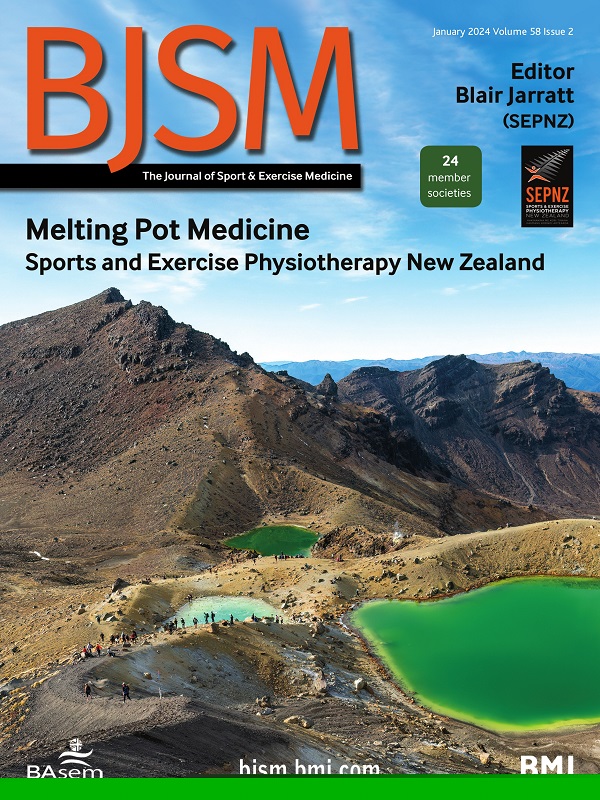国际单项体育联合会的保障政策和做法:是否正确?
IF 11.6
1区 医学
Q1 SPORT SCIENCES
引用次数: 0
摘要
体育运动中的人际暴力--无论是身体暴力、性暴力、心理暴力还是忽视--仍然是一个紧迫 的公共健康问题,给各级运动员的福祉蒙上了阴影。人际暴力在体育政策文件中通常被称为 "骚扰和虐待",其影响远远超出了个人,触及家庭、医疗保健系统和社会。1 近年来,保障战略已成为奥林匹克运动中保护运动员的一项重要战略,国际奥林匹克委员会(IOC)是其中的主要参与者。然而,夏季奥运会和冬季奥运会国际单项体育联合会(IFs)内部的保障政策和实践仍然存在很大差异,往往缺乏一致性和全面实施。认识到这些差距后,由国际奥委会安全体育部推动的一个内部质量控制项目着手建立一个框架,用于监测和评估国际单项体育联合会的保障工作。通过制定一套指标(见表 1),该项目旨在建立一个衡量保障活动的基准框架,并提供一个跟踪随时间推移发生的变化的工具。通过应用这一框架,可以确定主要挑战和需要关注的领域,从而有能力通过找出关键差距来支持综合框架加强其保障活动。查看此表:所有 39 个夏季和冬季奥运会国际单项体育联合会都参与了调查,这反映了体育界对保障工作的重视。截至 2022 年,85% 的国际单项体育联合会报告已制定了保障政策,但只有略多于一半的国际单项体育联合会全面实施了这些政策。保障官员是这些政策取得成功的关键,她们主要是女性(54%),但很大一部分(38%)没有正式的保障官员头衔或没有接受过专门培训(49%),这表明许多人在工作中没有得到充分的认可、支持或培训。...本文章由计算机程序翻译,如有差异,请以英文原文为准。
Safeguarding policies and practices in International Federations: on the right track?
Interpersonal violence in sport—whether physical, sexual, psychological or neglect—remains a pressing public health concern, casting a shadow over the well-being of athletes at all levels. The impact of interpersonal violence, often referred to as ‘harassment and abuse’ in sport policy documents, extends far beyond the individual, touching families, healthcare systems and society.1 In recent years, safeguarding strategies have emerged as a vital strategy to protect athletes in the Olympic Movement, with the International Olympic Committee (IOC) as a key actor. However, the landscape of safeguarding policies and practices within Summer and Winter Olympic International Federations (IFs) still reveals considerable variation, often lacking consistency and comprehensive implementation. Recognising these gaps, an internal quality control project driven by the IOC Safe Sport Unit set out to establish a framework for monitoring and evaluating the safeguarding efforts of IFs. By developing a set of indicators (see table 1), the project aimed to create a baseline framework for measuring safeguarding activities and to provide a tool for tracking changes over time. Through the application of this framework, it becomes possible to identify key challenges and areas in need of attention, resulting in the ability to support IFs in strengthening their safeguarding activities by pinpointing critical gaps. View this table: Table 1 Proposed set of safeguarding indicators for sport organisations All 39 Summer and Winter Olympic IFs participated, reflecting the importance placed on safeguarding by the sports community. As of 2022, 85% of these IFs reported having safeguarding policies, while only just over half had fully implemented them. Safeguarding officers, who are critical to the success of these policies, were predominantly women (54%), but a significant proportion (38%) did not officially hold the title of safeguarding officer or did not receive specialised training (49%), suggesting that many are working without the full recognition, support or training their role requires. …
求助全文
通过发布文献求助,成功后即可免费获取论文全文。
去求助
来源期刊
CiteScore
27.10
自引率
4.90%
发文量
217
审稿时长
3-8 weeks
期刊介绍:
The British Journal of Sports Medicine (BJSM) is a dynamic platform that presents groundbreaking research, thought-provoking reviews, and meaningful discussions on sport and exercise medicine. Our focus encompasses various clinically-relevant aspects such as physiotherapy, physical therapy, and rehabilitation. With an aim to foster innovation, education, and knowledge translation, we strive to bridge the gap between research and practical implementation in the field. Our multi-media approach, including web, print, video, and audio resources, along with our active presence on social media, connects a global community of healthcare professionals dedicated to treating active individuals.

 求助内容:
求助内容: 应助结果提醒方式:
应助结果提醒方式:


